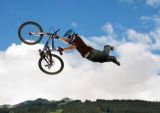- Forum
- General Discussion | Introductions | Off Topic Forum
- Photography General Discussion
- Image Stabilization vs tripod
Image Stabilization vs tripod
-
 Topic Author
Topic Author
- Sean Lewitts
- Lone Wolf
-
- Canon t4i
- Followers: 9
- Posts: 111
-
Points:
43
Post #290416
-

- KCook
- Photo Elder
-
- Canon EOS 50D and Olympus E-P5
- Followers: 1325
- Posts: 5410
-
Points:
32913
Post #290430
That said, I often cheat. I set the camera on the tripod plate, without taking the time to screw it down, so my hands are holding the camera in place while on the tripod. In this case I do leave the IS switched on.
Kelly Cook
-

- Shadowfixer1
- Photo Elder
-
- Olympus OMD E-M1 MKII
- Followers: 1350
- Posts: 5559
-
Points:
73610
Post #290436
-

- Sawyer
- Master of the Lens
-
- Canon 5D Mark II
- Followers: 248
- Posts: 1862
-
Points:
13181
-

- Moe
- Apprentice
-
- Canon 5D Mark III
- Followers: 251
- Posts: 2147
-
Points:
11899
Post #290767
Shadowfixer1 wrote: The image stabilization of a lens is looking for motion to counteract. It has been said that older versions at times would produce movement as a correction when there was no movement. The newer systems are not as vulnerable to to this and turning the IS or VR off when not needed would greatly increase your battery life. Those systems require quite a bit of power to operate. My 18-200, 80-400 and 105 Macro have VR and I have used them on a tripod with no ill effects without turning off the VR. The main reason I see to turn it off would be to conserve battery. Most of the time I do turn it off when on a tripod especially when shooting macro. The VR can make the image move in the viewfinder and ruin the composition if it's a real tight fit.
- Forum
- General Discussion | Introductions | Off Topic Forum
- Photography General Discussion
- Image Stabilization vs tripod
Latest Reviews
The Fujifilm XT5 is a 40MP mirrorless camera capable of 6.2K video at 30p. With those specs, it’s an ideal choice for photographers needing a camera to pull double duty for imaging and video.
The Canon EOS R100 is an entry-level mirrorless camera introduced in 2023. But just because it’s an entry-level camera doesn’t mean it’s a bare-bones camera. Find out why in this review!
Nikon’s retro-looking Nikon Zfc is anything but retro. Under its classic body is a host of features and amenities that make it a worthwhile compact mirrorless camera for 2024.
The Canon EOS R50 is one of the newest R-system cameras from Canon. Is it worth your money? Find out all the details you need to know in this comprehensive review.
Forum Top Posters
-
1TCav 8 posts
-
2Sawyer 5 posts
-
3db3348 4 posts
-
4Razky 4 posts
-
5CharleyL 4 posts
-
6Stanly 3 posts
-
7Randy Shaw 3 posts
-
8Moe 3 posts
-
9AstralArti... 3 posts
-
10Jason Stevens 3 posts
Latest Articles
Urban photography is a genre showcasing features in urban settings. You can photograph people, architecture, mass transit, and many other subjects. Learn how to do so in this guide!
The Nikon D850 might be an older DSLR, but it was ahead of its time when it debuted in 2017. That means it still has plenty of firepower to compete with today’s powerful mirrorless cameras.
The best beginner camera isn’t the same for everyone. That means having choice is of the utmost importance. In this guide, explore five excellent beginner camera options for 2024 and beyond.
Child portrait photography is a unique undertaking requiring special skills and talents to get the best results. Start mastering this photography niche with these essential tips!
The Fujifilm XT5 is a 40MP mirrorless camera capable of 6.2K video at 30p. With those specs, it’s an ideal choice for photographers needing a camera to pull double duty for imaging and video.
Using leading lines in photography helps improve the composition by drawing viewers in and leading their eye from the foreground to the background. Explore some fine examples of this in this guide!
The Insta360 has one of the best lineups of action cams and 360-degree cameras. With these Insta360 accessories, you can elevate your photography and videography game!
Creating impactful photos of landscapes depends on many factors, not the least of which is your talent behind the lens. This guide explores other elements required for the best product.















